
The Artist's Guide to Easels: Stability, Ergonomics & Creative Freedom
Discover the ultimate easel for your art! This guide covers studio & plein air types, essential ergonomics, materials, budgeting tips, and accessories to anchor your creative journey.
Title
Ever had your entire creative world come crashing down around you? I certainly have. I remember this one particularly vivid — and slightly mortifying — afternoon, battling a flimsy tripod easel that felt like it was in a secret conspiracy to collapse mid-stroke, sending my half-finished landscape cascading onto the muddy ground. Pure joy of painting? More like pure frustration! This frustrating experience taught me just how crucial the right easel is, and it’s a lesson I want to share with you. When you’re searching for the best easel, you’re not just picking a stand; you’re choosing an anchor for your artistic expression. For many artists, myself included, finding the right easel involves considerable trial-and-error to match their painting style and studio environment. So, how can you navigate this journey and find your perfect match, skipping some common pitfalls and saving yourself from a muddy canvas disaster? Let's explore the world of easels together and find the one that truly sings to your artistic soul. Here’s what you can expect to discover as we navigate this decision:
- Studio Easels: Designed for stability and durability in your dedicated workspace (H-frame, A-frame, Tabletop).
- Plein Air Easels: Built for portability and adaptability outdoors (French, Tripod, Pochade).
- Specialty Easels: For unique artistic needs, ergonomic comfort, and even displaying your finished art.
- The Buying Checklist: Crucial factors like stability, materials, budget, and accessories.
- Ergonomics and Well-being: How your easel can support your body, not just your art.
The Easel’s Long Journey: From Ancient Egypt to Your Studio
It’s almost whimsically surreal to think that artists have been grappling with the age-old puzzle of propping up their work for thousands of years. Early forms of easels, simple wooden supports, date all the way back to ancient Egypt. Imagine, the very same fundamental need connecting us across epochs, from an ancient Egyptian craftsman to a 19th-century Impressionist like Monet, lugging his easel out into a sun-drenched field to capture a fleeting moment! Renaissance masters like Leonardo da Vinci, whose intricate anatomical studies demanded precise angles, and Vermeer, who likely needed a consistently stable setup for his camera obscura, relied on their own versions – probably far less adjustable than ours, but still essential for their groundbreaking work. It really makes you pause and realize that some fundamental needs, like finding a stable surface for creation, are truly timeless, connecting artists across epochs in a shared lineage; it’s a shared artistic lineage rooted deeply in the history of creation itself.
Over centuries, we saw innovations like adjustable ratchets and clamps, allowing artists more control over canvas height and angle. Beyond these, the introduction of adjustable tilt mechanisms dramatically improved versatility, letting artists work on canvases from horizontal to vertical. Later, even counterweights were integrated into larger studio easels, making it effortless to raise and lower heavy canvases by offsetting their weight. The introduction of robust locking mechanisms and brass hardware further enhanced stability and durability. While wood remained primary, early metal components began to appear, enhancing durability and design flexibility. The Industrial Revolution brought about more standardized, mass-produced components, and patented designs began to emerge, making easels more accessible and varied. And then came the lyre easel, with its distinctive A-frame shape, which offered a slightly more compact footprint than earlier H-frames. Later, the introduction of lighter, more durable metals (like aluminum), modern plastics, and even advanced composites revolutionized plein air painting – a movement embraced by artists like the Impressionists who wanted to capture fleeting moments outdoors. These newer materials offered advantages like corrosion resistance and even greater portability, crucial for braving the elements. This continuous evolution, driven by the timeless pursuit of creation, is always adapting and innovating to meet your artistic needs.
But enough with the dusty history books for a moment; let's bring this journey into your vibrant creative present.
Your Body Will Thank You: The Crucial Role of Easel Ergonomics
Before we dive into the nitty-gritty of easel types, there’s one aspect that artists, myself included, often tragically overlook until our bodies start screaming at us: ergonomics and your well-being. This is a big one, perhaps the biggest. Your easel isn’t just about supporting your canvas; it’s about supporting you. Spending hours hunched over can lead to serious back strain, neck pain, and even repetitive stress injuries. I remember a period when I ignored this, and my shoulder was constantly aching; it was so bad, I almost gave up painting for a bit. Investing in an easel that adjusts easily to your height and allows you to work comfortably whether standing or sitting is an investment in your physical well-being and longevity as an artist. Make sure you can easily raise the easel to eye level to avoid neck strain, and tilt it forward or back to minimize glare and find the most comfortable painting angle. Good lighting, too, plays a critical role here; properly positioned light minimizes eye strain and ensures you’re seeing your colors accurately. Some designs even incorporate a built-in footrest or encourage a naturally upright posture, which can be a game-changer. Maintaining proper posture – keeping your back straight and shoulders relaxed – will transform your painting sessions. During breaks, or even mid-session, try a few simple stretches. Gentle neck rolls, shoulder shrugs, wrist rotations, maybe touch your toes, or do a quick standing side bend – these tiny actions can make a massive difference, believe me. Think about how much happier and more productive you’ll be if you’re not constantly battling discomfort. It’s a game-changer, honestly.
Your Creative Space, Your Perfect Easel
Now that we've considered how your easel supports you, let's look at how it fits into the space where your art comes to life. Choosing an easel isn't merely about holding your canvas; it’s about optimizing your comfort, stability, and ultimately, your inspiration. A wobbly easel can absolutely disrupt your flow – trust me, you’ve probably been there, mid-stroke, only for everything to judder and ruin a careful line! A perfectly adjusted one, though, lets you lose yourself in the stroke. Your environment dictates much of this choice. Do you primarily paint in a dedicated studio space, or does the call of the outdoors frequently beckon you to capture landscapes under shifting light? Are you working on stretched canvases, rigid panels, or flexible canvas boards? Understanding these fundamental differences is your first step. Also, consider the easel's own weight and the scale of work you typically produce. A sturdy, heavy easel is great for monumental pieces and stability, but if you frequently rearrange your studio or have mobility concerns, a lighter model might save you a lot of backache. One more thing to consider: does the easel make a lot of noise when you adjust it? This can be surprisingly disruptive in quiet studio environments or shared spaces.
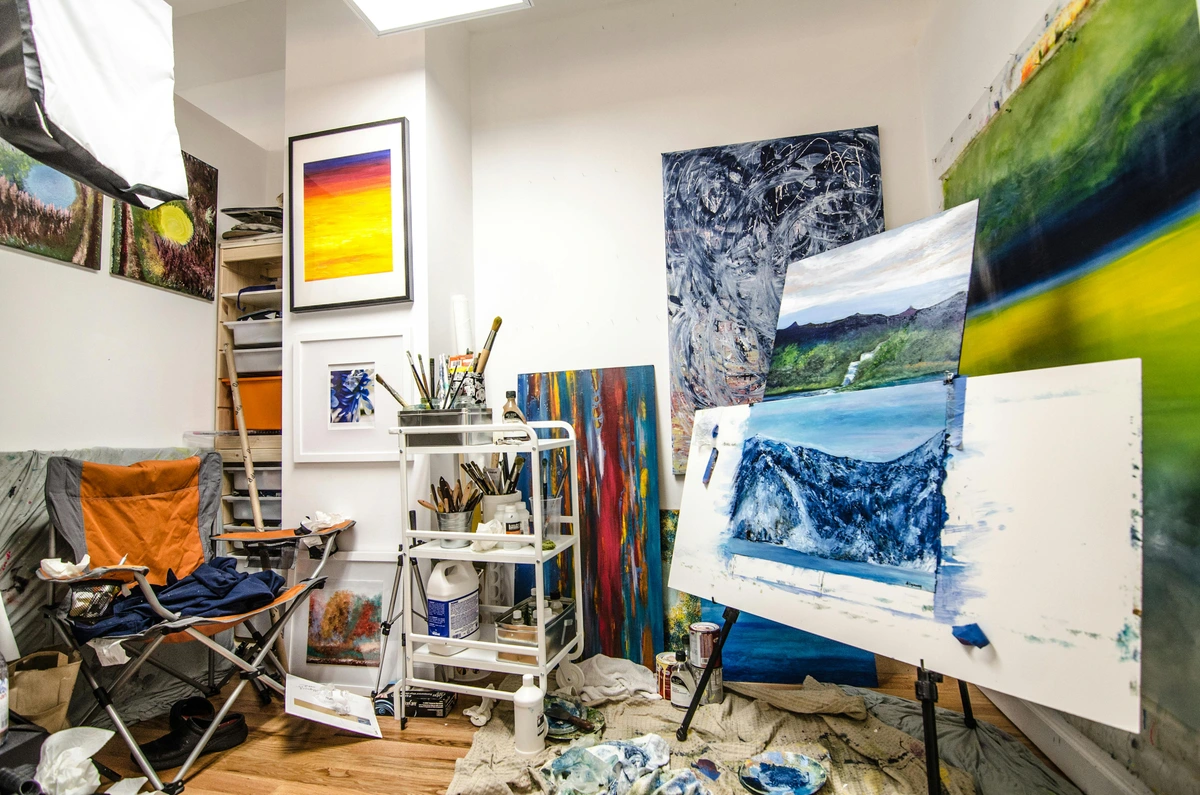
The Heart of Your Studio: Finding Your Artistic Anchor
For many artists, the studio is a sanctuary, a place where ideas take root and flourish without the interruptions of weather or curious onlookers. Here, your easel can afford to be substantial, stable, and designed for longevity. It’s where you might spend countless hours, refining your technique, creating works that might one day hang in a gallery or even become part of a collection, much like the vision you hold for your own art, perhaps one day in your museum in 's-Hertogenbosch.

H-Frame Easels: The Unshakeable Workhorses
If rock-solid stability and durability are your top priorities – perhaps you're dreaming of tackling a canvas so large it barely fits through your studio door – then you, my friend, are looking for an H-frame easel. These magnificent structures, characterized by a sturdy rectangular base, a robust vertical mast, and a lower center of gravity, are built like tanks. They provide unparalleled support for large canvases, heavy mediums like oil paints, and intense brushwork. This is perfect if you’re layering thick impasto (a technique where paint is laid on thickly, creating a textured surface, allowing for expressive textures) or pushing paint around with gusto. Their superior stability comes from a wider, rectangular base and that low center of gravity, which prevents wobbling even with monumental works. You can lean into your strokes with confidence, knowing your artwork is secure and won't take an unexpected tumble mid-stroke (you’ve definitely learned that the hard way!). It’s the kind of easel that makes you feel like you could tackle a grand mural, even if your current project is just a postcard-sized study.
Some models even come with handy shelves or compartments within their robust structure, offering a neat place for larger palettes or a stash of frequently used paints – a real boon for an organized (or aspiring-to-be-organized) studio artist. While they demand a dedicated space and aren't moving anywhere fast – and, let's be honest, can feel a bit like a medieval siege weapon taking up valuable real estate in a smaller, cluttered studio (thankfully, no actual battering ram required!) – for the serious artist working with heavy oil paints or large acrylic canvases, they are an investment that pays dividends in comfort and artistic freedom. Remember to check their maximum weight capacity – you don't want your monumental masterpiece to overpower your easel, especially if you’re working on a 60x60 inch gallery-wrapped canvas! In short: the ultimate choice for artists prioritizing maximum stability and capacity in a dedicated studio. Some, more minimalist, H-frame designs are also known as "gallery-style" easels, often chosen for their aesthetic appeal within a professional studio or for displaying finished art, differentiating them from purely utilitarian workhorses.
A-Frame Easels: Versatile and Space-Saving
Perhaps your studio is a cozy corner, or you need an easel that can be tucked away when not in use. A-frame easels offer a fantastic compromise. Their tripod-like design provides good stability without the massive footprint of an H-frame. They're space-saving because their legs angle inward, allowing for a more compact setup and easier storage when not in use. You’ll find them a popular choice for their balance of stability, versatility, and relative ease of storage. They're a solid all-rounder for many studio setups, comfortably accommodating a decent range of canvas sizes and often adjustable in height and tilt. While H-frames are unmatched for monumental works, a good quality A-frame can still reliably support medium to larger canvases with consistent stability. They’re also excellent if you prefer to paint at a slight incline while seated, offering that comfortable, intimate angle. They're a dependable studio companion for the versatile artist. In short: a good, versatile option for many studio artists, especially in smaller spaces.
Tabletop Easels: For Smaller Spaces and Intimate Work
When space is truly at a premium, or you prefer to work seated on a desk or table, tabletop easels become a real lifesaver. These compact wonders are perfect for smaller canvases, intricate details, sketching, and color studies, and for artists who enjoy working closer to their piece. You’ll often grab one for detailed sketching or when experimenting with a new medium at your desk, providing a stable surface for color mixing at eye level while seated. They set up quickly on any flat surface, making them incredibly versatile for temporary setups or detailed studies. They’re also a great option if you’re experimenting with mixed media, watercolors (allowing for flat or very steep angles, which is crucial for controlling washes and preventing paint runs), or working on multiple smaller pieces concurrently, providing a stable, flat base for layering and drying. And for those artists who do a lot of preliminary sketching or planning before committing to a large canvas, a tabletop easel provides that perfect, focused workspace for developing ideas. They’re also an excellent choice for artists with limited mobility who prefer to work from a seated position. In short: ideal for artists needing portability and space-saving solutions for detailed, smaller-scale work.
Embracing the Outdoors: Easels for Plein Air Painting
Ah, plein air! The joy of capturing light as it dances across a landscape, the scent of fresh air, the invigorating challenge of working quickly. For this, your easel needs to be a truly adaptable companion: portable, quick to set up, and robust enough to handle the elements, especially unexpected gusts of wind. If you’re new to painting outdoors, you might want to read up on what plein air painting truly entails to fully appreciate the unique demands and spirit of this approach. Also, consider an easel with an easily cleanable, integrated palette, and a way to secure your brushes; these small features make a big difference when you’re battling the elements.
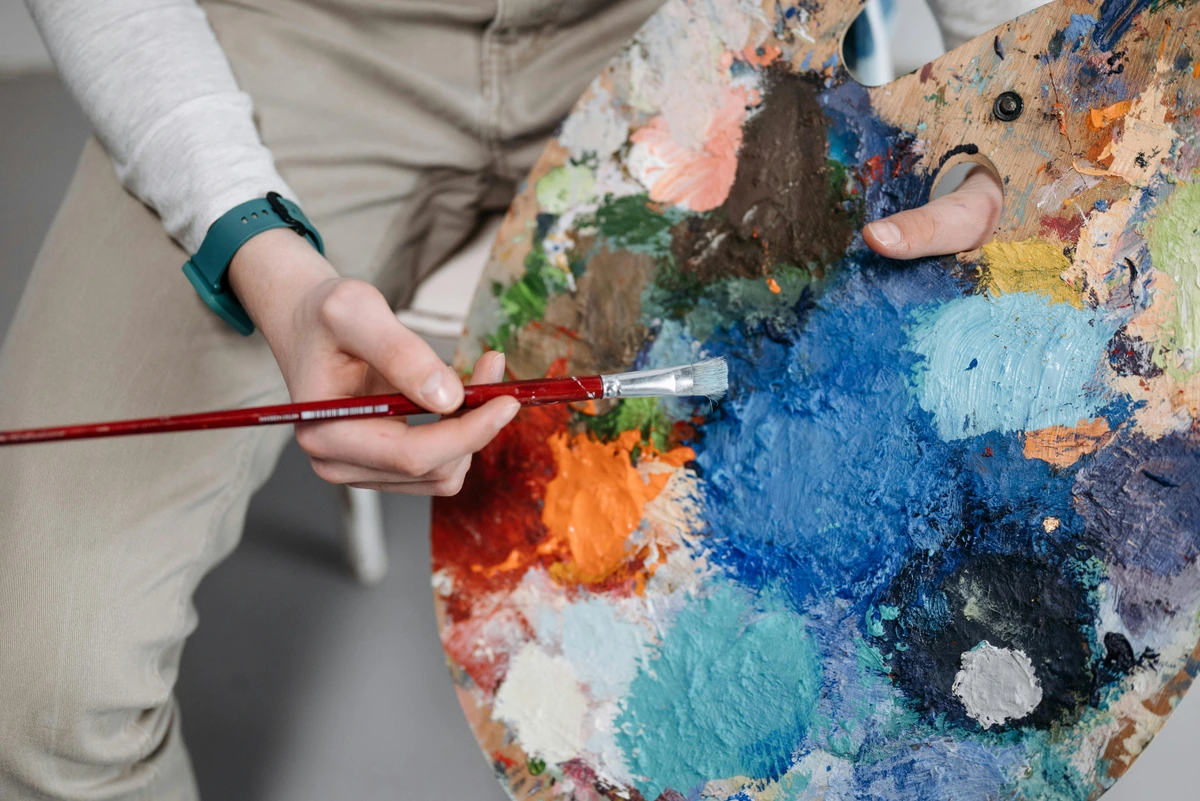
French Easels: Classic, Compact, and All-Inclusive
Ready for an entire studio in a box? The French easel is a true icon of outdoor painting. Picture a wooden box that unfolds into a three-legged easel, complete with a built-in palette and compartments for your paints and brushes. It’s an entire studio in a compact, portable package! You’ll appreciate the convenience of having everything you need right there, making setup and pack-up much smoother. While they can be a bit heavier than other plein air options – something significant to consider if you have mobility issues or plan long hikes to remote locations – their integrated design and sturdy build make them a perennial favorite for good reason. The closed box structure also offers surprising wind resistance, more than you might expect from a lighter tripod easel, which is a real blessing when working outdoors. They're particularly good for artists who prefer oil paints, as the robust build can handle heavier palettes and tubes. What’s more, many artists find French easels perfectly suitable for studio use too, appreciating their all-in-one organization and decent stability for medium-sized works. In short: a traditional, all-in-one choice for organized plein air and studio work.
Tripod Easels (Field Easels): Lightweight and Nimble
For ultimate portability, you can’t beat a tripod easel, often called a field easel. These are typically made from lightweight aluminum, folding down to a surprisingly compact size. They set up quickly and are perfect for artists who hike to remote locations or simply prefer a lighter load. You’ll likely take yours on countless spontaneous adventures! While they may not offer the same rock-solid stability as a dedicated studio easel, their adjustability for uneven terrain and ease of transport make them ideal companions for those outdoor painting excursions. You’ll find them incredibly liberating, especially if you favor lighter mediums like acrylics or watercolors. And for those breezy days, a small weight – like a dedicated sandbag, your gear bag, or even a heavy water bottle – attached to the center or legs can make all the difference in keeping your masterpiece from becoming a kite! In short: the go-to choice for maximum portability and quick setup in the field.
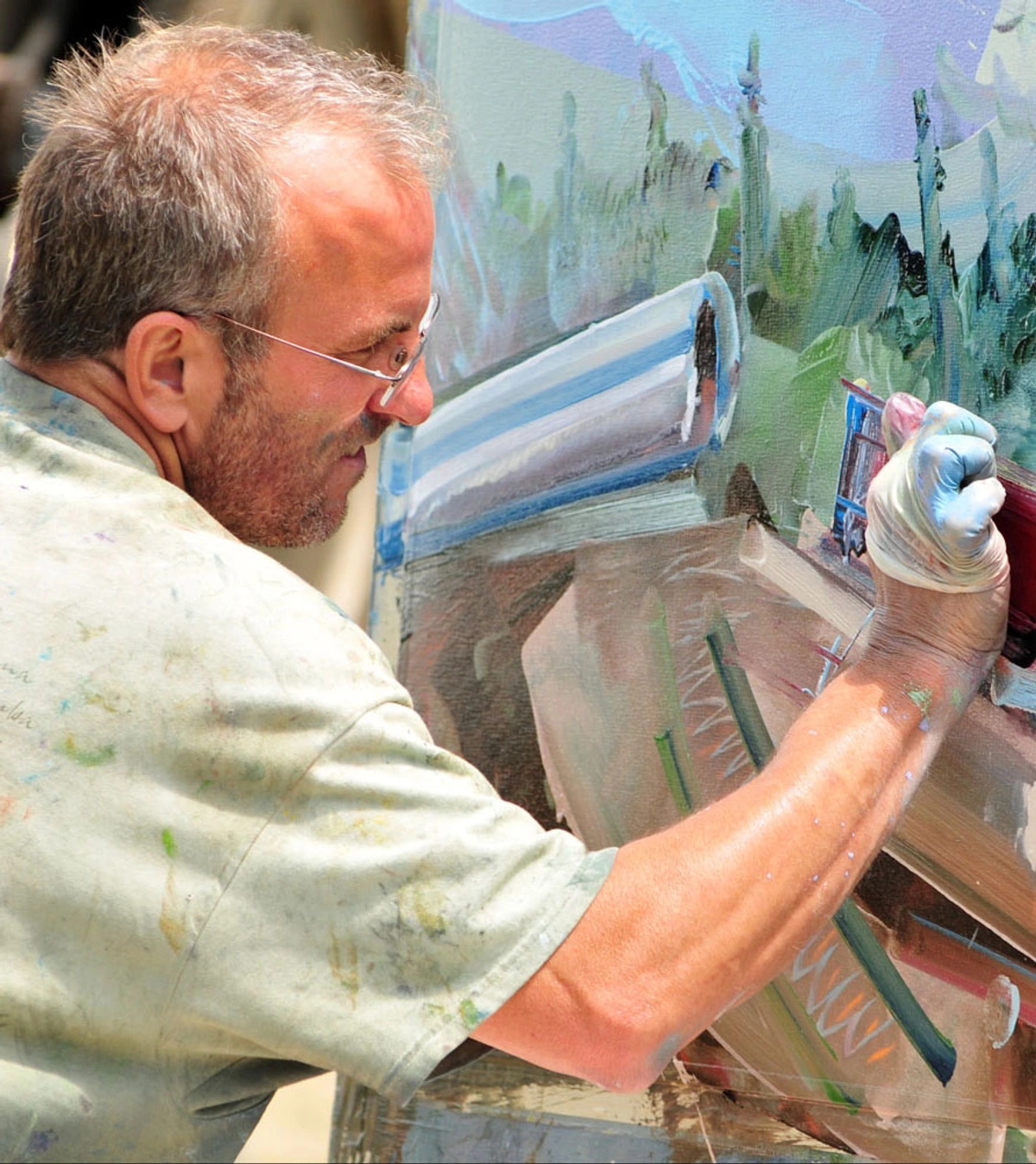
Pochade Boxes: Minimalist Magic for the Adventurous Artist
If you're a minimalist who works on smaller panels or canvases, a pochade box might just be your perfect match. These highly compact boxes are essentially mini-easels with built-in palettes and sometimes storage, designed primarily for quick studies and plein air sketching where capturing a fleeting moment is key, rather than detailed, long-term works on larger canvases. They typically accommodate panels ranging from 6x8 inches to 9x12 inches, making them perfect for those quick, decisive studies. You can hold them in your lap, attach them to a tripod (a common and highly recommended setup for stability outdoors), or even balance them on a convenient rock. They encourage a fast, decisive approach, allowing you to capture a scene's essence with incredible efficiency. Perfect for those quick acrylic sketches or small oil studies, and incredibly easy to just grab and go. In short: ideal for minimalists focused on small, quick studies and travel.
Bridging the Gap: Convertible and Niche Specialty Easels
Sometimes, your artistic path veers off the beaten track, demanding tools that don’t quite fit the usual mold. This is where the wonderfully niche world of specialty easels comes in, designed to cater to those unique creative workflows – think of them as the unsung heroes of specific artistic endeavors.
Convertible Easels: Blending Studio and Field Needs (With Trade-offs)
What you're probably thinking is: can't one easel do it all? The truth is, convertible easels exist, attempting to bridge this gap between studio and field. These often combine features of A-frame designs with some portability elements. While they offer versatility, be prepared for some compromises. As I've learned from my own attempts to make one tool do everything, trying to be a jack-of-all-trades can sometimes result in a master of none; it isn't ideal for specific tasks. For example, a convertible easel might have a less secure locking mechanism for its tilt compared to a dedicated studio easel, making it less ideal for very precise angle work. It might be heavier than a dedicated field easel, making long hikes a challenge, yet lack the sheer unshakeable stability of an H-frame studio easel when tackling a massive canvas. Other common trade-offs include fewer adjustment options compared to dedicated models, or a less integrated storage solution. It’s about finding the right balance for your personal workflow and being realistic about its strengths and limitations. In short: a versatile option for artists needing flexibility, though often with some trade-offs in stability or portability.
Specialty Easels: For Unique Artistic Journeys
So, your art needs something a little...different? Beyond the common types, there are easels designed for very specific needs. You might encounter versatile easel desks that merge the functionality of a drawing board with easel capabilities, perfect for artists who jump between sketching, painting on smaller canvases or panels, and even digital work (yes, some are designed to hold tablets or monitors!), making them ideal for mixed-media artists. For larger studios or institutions, mobile easel stations or easel carts exist, allowing you to wheel colossal canvases around with surprising ease – a godsend if you're working on something truly monumental and need to chase the light or just get it out of the way for a moment. There are also specialized watercolor easels that allow you to work completely flat or at very steep angles, crucial for controlling the flow of water and preventing paint from running unexpectedly. Or, if you’re tackling something truly monumental, certain heavy-duty mural easels can support canvases far beyond what typical studio easels can handle.
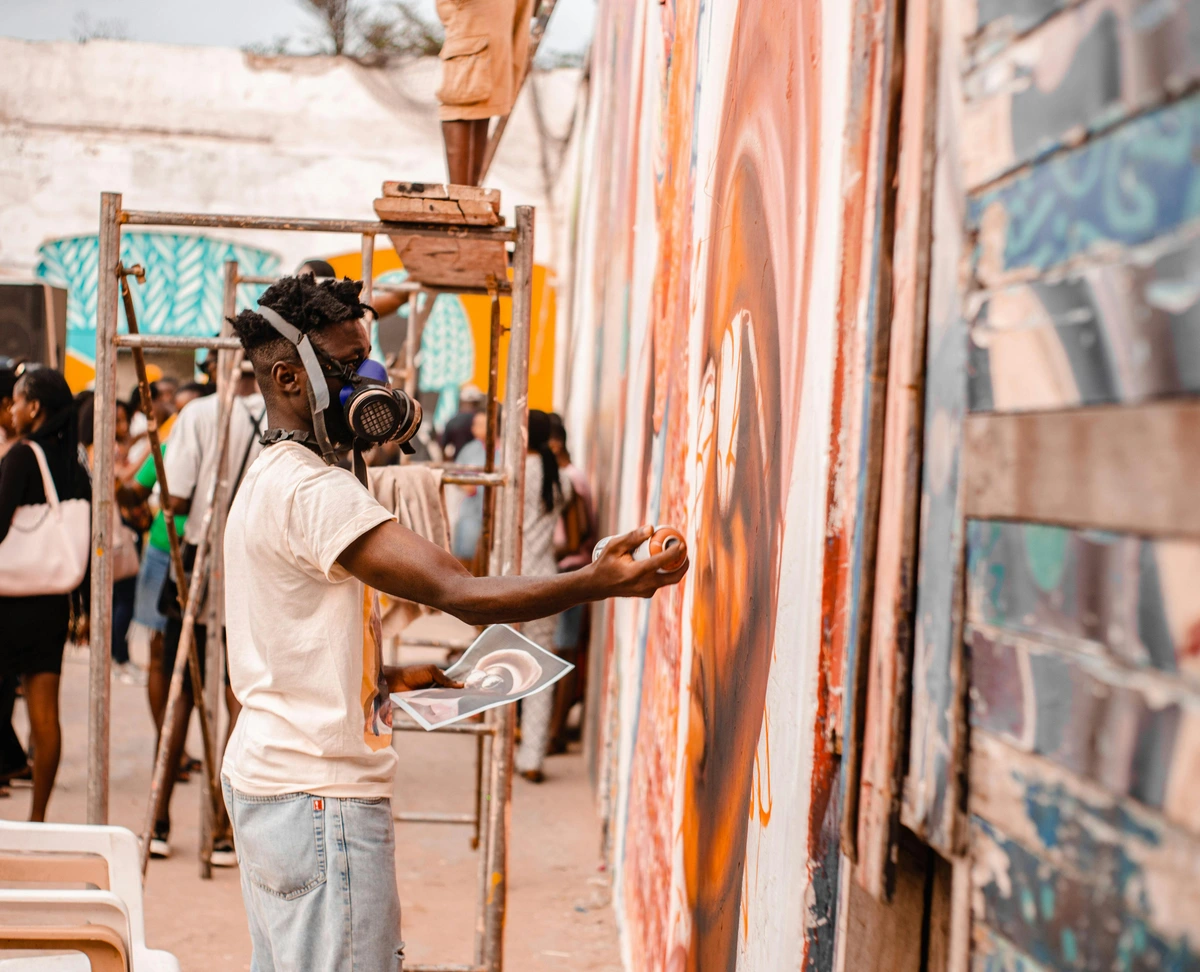
Even simple drawing boards or sketch boards can act as a basic, portable easel when propped up, perfect for quick charcoal or pastel work. And for those moments when your masterpiece is finally complete and ready for its grand debut, there are display easels or gallery easels. These lighter, often more decorative stands are designed purely to showcase finished paintings. You’ll find them in various forms: a simple, elegant tripod display easel for a single canvas, or even tabletop display easels for smaller works at an exhibition. They’re less about the making and all about the presentation.
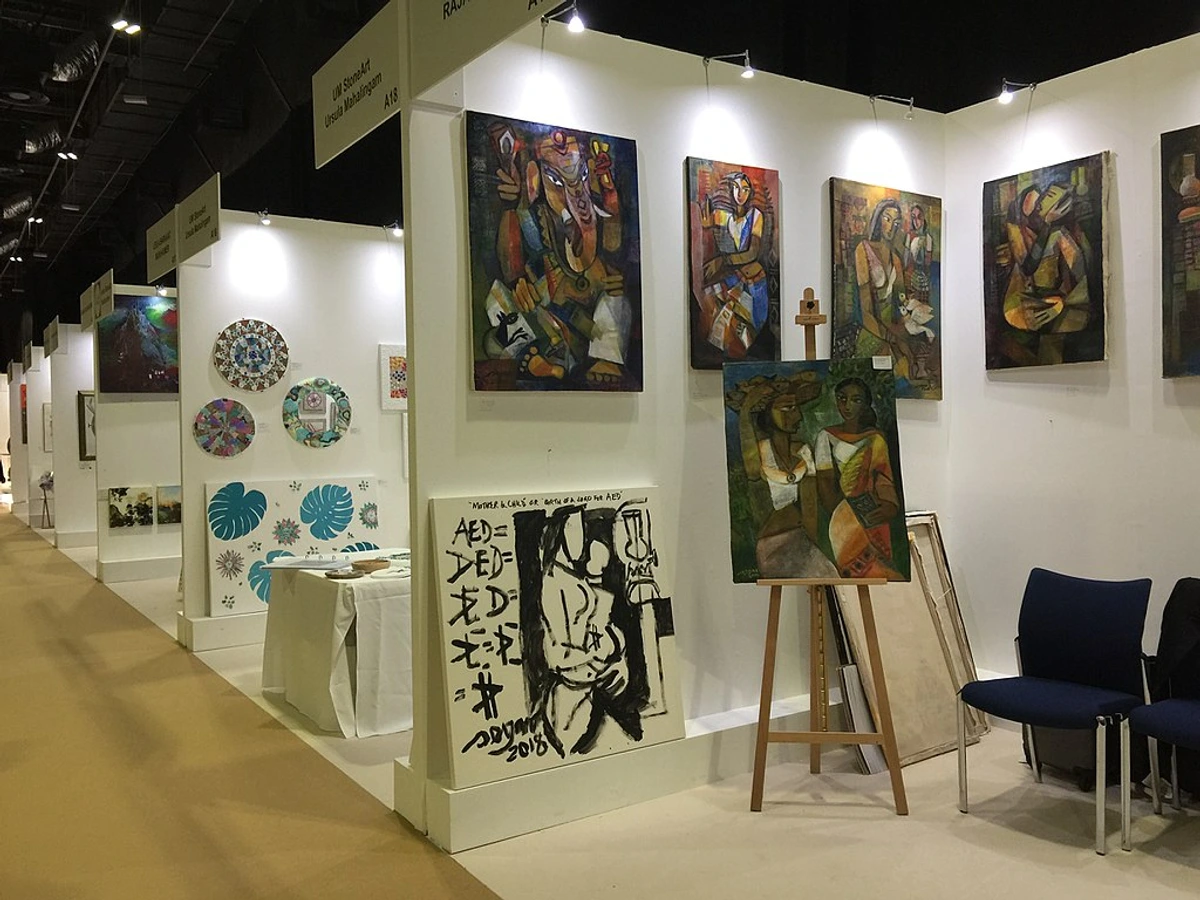
What to Look For: Your Essential Easel Decision-Making Checklist
So, you’ve seen the options, but how do you make your choice? Before you make your final decision, let’s consider some crucial factors that will impact your painting experience. This is where the rubber meets the road, where you truly decide what kind of artistic partner you need. Think of this as your personal checklist for a lasting creative relationship.
1. Stability is Non-Negotiable
No one wants a wobbly easel, right? Regardless of whether you’re in the studio or battling a gentle breeze outdoors, a stable easel is paramount. Look at the material: heavy beechwood offers superb stability for studio easels, while aluminum is lighter but still needs robust construction for plein air. Check the joints, fasteners, and how the canvas tray secures your artwork. You want to feel confident that your easel won't wobble or collapse mid-stroke. Always check the manufacturer’s maximum weight recommendations for your canvases – pushing those limits can lead to instability and potential artistic heartbreak. You've probably had a few near misses, and believe me, it’s not fun. For added security, especially on uneven outdoor terrain, look for features like rubberized feet or adjustable leg levelers.
2. Adjustability and Ergonomics
Your comfort is key to long, productive painting sessions. Can you easily adjust the easel’s height to work standing or sitting? Does it tilt to reduce glare or allow for different working angles? Look for smooth, secure adjustment mechanisms like crank handles, spring-loaded levers, or sturdy knobs. Beyond just height and tilt, consider your own physical needs – your height, reach, and any mobility issues. An easel that forces you into an awkward posture will quickly sap your joy and creativity. (You learned more about the health aspect in the 'Your Body Will Thank You' section, remember?) Maintaining a stable surface is also crucial for accurate color mixing. Finally, consider the ease of cleaning; paint splatters are inevitable, and an easel that wipes down easily will save you time and frustration.
3. Portability: Your Freedom to Create
For plein air work, portability directly translates to artistic freedom. Consider the easel's overall weight, how compactly it folds, and if it comes with a carrying case or strap. You’ll be thankful for a lighter easel after a long hike to that perfect vista. For studio easels, portability might mean ease of moving it around your space, so look for casters or a design that’s easy to lift and shift. The overall weight of the easel, from a few pounds for a tripod easel to 50+ pounds for a professional H-frame, profoundly impacts how you use it.
4. Ease of Assembly/Disassembly
This is often an overlooked factor, especially for artists who frequently move their studio setup, travel with their easel, or need to store it compactly. For convertible or portable easels, how quickly and easily can you set it up or break it down? Are the instructions clear? Are there many small, easily lost parts? A complicated assembly process can be a real creativity killer, so consider this a crucial part of your decision-making, particularly if you're not a fan of deciphering cryptic instruction manuals (I know I'm not!).
5. Materials and Durability
The material of your easel significantly impacts its lifespan and performance, as well as its environmental footprint. Paying attention here really makes a difference in the long run. Also, the choice between a mass-produced, often more affordable easel and a handcrafted one can influence both quality and price – handcrafted often means greater attention to detail and longevity. For the eco-conscious artist, consider if the wood is sustainably sourced or if the aluminum is recyclable – small choices that make a difference.
- Wood (Beechwood, Oak, Pine):
- Pros: Excellent stability, classic aesthetic, good weight (especially beechwood/oak) for studio use. Known for longevity and resistance to warping when properly cared for. A good finish protects from paint spills and humidity changes. Hardwoods like beech offer superior density and durability compared to softer woods like pine, which is often less dense and can splinter or show wear over time, especially in frequently adjusted parts.
- Cons: Heavier and less portable. Can be sensitive to humidity changes, potentially leading to warping or cracking.
- Aluminum:
- Pros: Lightweight, excellent portability, and resistance to rust. Sets up quickly, ideal for outdoor painting. Recyclable. The quality of aluminum can vary significantly; well-constructed models offer robust stability, while cheaper, thinner aluminum can feel flimsy.
- Cons: Might feel less substantial or sturdy than wood. Can be prone to scratching or denting if handled roughly. Cheaper models can feel flimsy and unstable if the aluminum is thin.
- Steel:
- Pros: Offers ultimate rigidity and incredible stability. Ideal for very heavy-duty, fixed studio setups where movement is not a concern. Often used for specialized mural easels or for supporting monumental works.
- Cons: Very heavy, making it completely non-portable. Less common for general artistic use due to weight and typically higher cost.
Maintenance Tips for a Long-Lasting Easel
Taking a little time for upkeep can significantly extend your easel’s life: Think of it like taking care of any good tool; a little love goes a long way.
- Clean Immediately: Wipe off paint spills and drips from your easel right away, especially on wooden parts, before they dry and stain.
- Control Humidity: For wooden easels, try to maintain a stable environment. Extreme humidity changes can cause wood to warp or crack. A little furniture polish or wood oil every now and then can help nourish the wood.
- Tighten Fasteners: Periodically check all screws, bolts, and clamps. Over time, vibrations from painting or moving the easel can loosen them. A quick tighten can prevent wobbles and prolong stability.
- Store Safely: When not in use, store your easel in a dry, stable place away from direct sunlight or extreme temperatures. Fold portable easels compactly to protect moving parts.
6. Easel Accessories: Enhancing Your Workflow
Beyond the easel itself, think about a few accessories that can truly streamline your painting process. Consider palette holders that attach to your easel, keeping your mixing surface at an ideal height, or brush holders and tool trays that keep your frequently used items within arm’s reach, preventing those frustrating moments of searching for a specific brush. For watercolor artists, a clip-on water cup holder can be a godsend. Oil painters might appreciate a dedicated palette knife holder. You might also consider a mahlstick – a slender stick with a soft ball at one end, used to steady your hand for fine details on larger canvases, preventing smudges and ensuring precision. Or perhaps easel lamps for consistent lighting. Even simple canvas clamps can provide extra security for your artwork, especially when working on lighter panels or in breezy conditions. These small additions can make a surprisingly big difference to your comfort and efficiency, allowing you to stay in the zone.
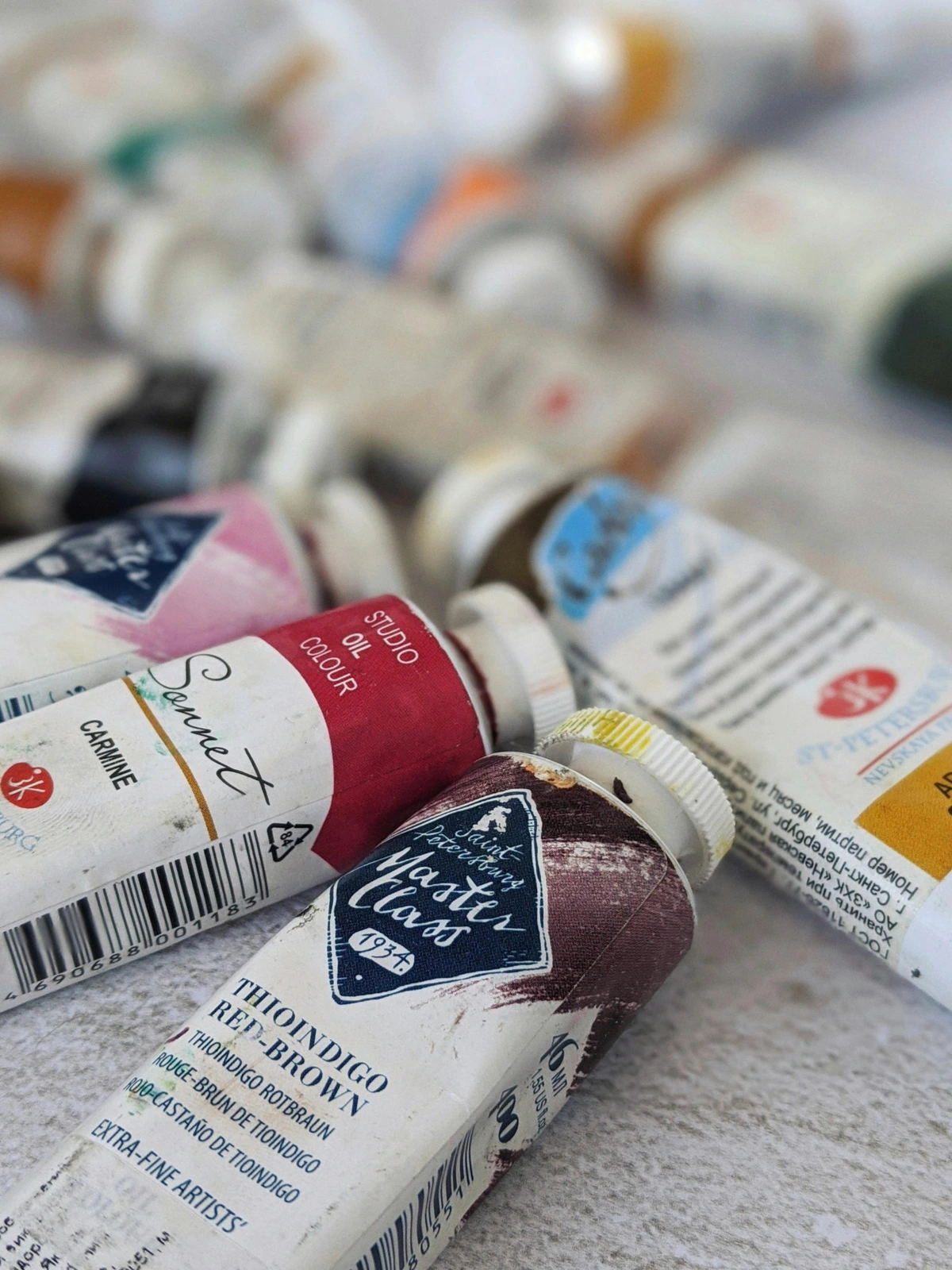
7. Budgeting for Your Artistic Investment
Let’s be real, art supplies can add up quickly, and easels are no exception. They range from very affordable tabletop models to professional-grade studio giants costing hundreds, or even thousands for specialty options. You’ll often find that you get what you pay for in terms of stability, durability, and features. Instead of focusing solely on the lowest price, consider the easel an investment in your artistic practice, much like you would any long-term tool. A higher-quality easel will last longer and provide a more satisfying experience, allowing you to focus on your art rather than wrestling with your equipment. Sometimes, saving up for a slightly better model is the wisest choice – think of it as investing in your peace of mind and creative flow, saving you money on replacements and frustration in the long run. Always check reviews, especially for budget-friendly options, as quality can vary wildly.
To give you a rough idea:
- Tabletop easels: typically range from $20 to $100.
- A-frame or basic field easels: usually fall between $50 and $250.
- Robust H-frames, high-quality French easels, or advanced field setups: can be anywhere from $150 to $700+. Professional-grade options often feature smooth crank mechanisms for effortless height adjustment, heavier and more precisely milled hardwood components, and highly robust hardware, pushing prices even higher.
- Specialty easels for monumental work or unique needs can easily exceed $1000, reaching several thousands for custom-built or highly specialized equipment.
Creative & Budget-Friendly Alternatives
If you’re on a tight budget, don’t despair! You’ve certainly had your share of creative solutions. Also, don’t overlook the secondary market – used easels can be a fantastic, budget-friendly option, though you’d always recommend inspecting them thoroughly for wear, missing parts, or any signs of instability before committing. Check art school surplus sales or local art guilds for hidden gems. You can also get ingenious with your easel setup or even explore DIY easel kits or plans online, appealing to the resourceful artist who loves a good project:
- DIY Elevations: Convert a sturdy desk or table into a makeshift painting surface by adding wooden blocks to elevate your canvas. This simple trick can make a big difference, allowing you to achieve a more comfortable working height without much expense.
- Binder Clip Board: For smaller, lighter work, a large, heavy-duty binder clip can secure a board or canvas to a shelf or the back of a sturdy chair. It’s not glamorous, but it works in a pinch!
- Upcycled Solutions: Look around your home for sturdy, upright objects. An old, strong music stand, a repurposed cabinet door attached to a frame, a stack of heavy books, or even an old wooden ladder (properly secured against movement) can provide a temporary vertical surface. Old wooden library card catalogs, filing cabinets, or even an old sewing machine base can be surprisingly sturdy foundations for a DIY easel.
- Lamp Stand: A sturdy, adjustable lamp stand, perhaps one you already have, can be repurposed as a temporary easel for very small works or sketches, offering surprising versatility for quick studies.
- DIY Modifications: Don’t be afraid to enhance a basic easel. Adding rubberized feet for grip, reinforcing loose joints with stronger hardware, or even crafting simple clip-on trays for brushes can significantly improve a less-than-ideal model.
While not ideal long-term, these solutions allow you to get started without breaking the bank. After all, what is art if not creative problem-solving? Sometimes, all you need is a stable vertical surface, and a bit of ingenuity goes a long way.

Easel Types: A Quick Comparison
Now that you know what to look for, here’s a quick overview of how different easel types stack up:
Easel Type | Key Benefit/Characteristic | Stability | Portability | Ideal Use | Common Media |
|---|---|---|---|---|---|
| H-Frame | Unparalleled support for large, heavy work; sturdy rectangular base, robust vertical mast, lower center of gravity | Excellent | Poor | Large studio canvases, heavy paint | Oils, Acrylics |
| A-Frame | Versatile all-rounder, space-efficient; tripod-like design, legs angle inward for compact setup/storage | Good | Fair | Medium studio canvases, versatile, intimate seated angle | Oils, Acrylics, Mixed Media |
| Tabletop | Compact, ideal for detailed small-scale work; supports intricate details, color studies, color mixing; suitable for artists with limited mobility | Moderate | Excellent | Small detailed work, sketching, temporary setups, limited space | Watercolors, Sketching, Small Oils, Mixed Media |
| French | All-in-one portable studio, integrated storage/palette/compartments; surprising wind resistance | Good | Good | Plein air, studio work, organized | Oils, Acrylics |
| Tripod | Maximum portability, quick setup; lightweight aluminum, compact size, adjustable for uneven terrain | Moderate | Excellent | Plein air, hiking, quick setups, spontaneous adventures | Acrylics, Watercolors, Sketching |
| Pochade Box | Minimalist, perfect for quick studies (6x8 to 9x12 inches); highly compact mini-easel with built-in palette for quick, decisive approach | Good (on tripod) | Excellent | Small studies, quick sketches, travel, capturing fleeting moments | Oils, Acrylics (small scale) |
| Convertible | Blends studio/field features, flexible; aims to bridge the gap with trade-offs in specific tasks | Fair | Fair | Flexible use, artists with varied needs | All (with compromises) |
| Specialty | Designed for very specific artistic tasks; includes easel desks, mobile stations, mural easels, watercolor easels, display easels | Varies | Varies | Large formats, specific techniques, display, mixed-media, digital work | Technical drawing, Watercolors, Murals |
Frequently Asked Questions (FAQ)
Q: What’s the main difference between a studio and a plein air easel? A: That's a great question, and it really comes down to priority! A studio easel prioritizes rock-solid stability for large canvases and intense work, often being heavy and non-portable, because its primary role is to be a steadfast anchor in a fixed environment. A plein air easel, on the other hand, prioritizes lightness, compactness, and quick setup, often with integrated storage for battling outdoor conditions, even if it means sacrificing some stability. It’s really about adapting to where you’re creating.
Q: How much should I spend on an easel? A: Prices vary widely, but generally, expect to spend anywhere from $20 for a basic tabletop model to over $700 for a professional studio easel, and even more for specialty equipment. I tend to see it as an investment in your artistic practice, much like any long-term tool. A higher-quality easel often provides better stability, durability, and ergonomic comfort, ultimately enhancing your creative flow. Check the 'Budgeting for Your Artistic Investment' section for more detailed price ranges; investing a little more upfront can save you money on replacements and frustration later.
Q: Can I use a tabletop easel for plein air? A: While you could technically try to balance one on a picnic table (I’ve seen it attempted, bless their hearts), I wouldn't genuinely recommend it for a truly comfortable or reliable plein air experience. Tabletop easels lack wind resistance, integrated storage, and are cumbersome for real outdoor work. A dedicated field easel will save you a lot of frustration and potential mess, believe me.
Q: How do I choose an easel for art school or a specific program? A: This is a brilliant question that many emerging artists grapple with! Art schools and specific programs often have very particular requirements or recommendations for easels, so don't just guess. They might specify a certain type (e.g., a sturdy H-frame for oil painting) or a maximum size to fit studio spaces, often to ensure uniformity for critiques or to maximize space in shared studios. Your best bet is always to check the program’s supply list or contact the art department directly before purchasing. Don’t be afraid to ask – it’ll save you time and money!
Q: How do I maintain my easel? A: Think of it like taking care of any good tool; a little love goes a long way. For wooden easels, wipe off paint spills immediately, avoid excessive moisture, and occasionally condition the wood to prevent drying or warping. For metal easels, wipe clean with a damp cloth; avoid abrasive cleaners. Periodically check and tighten all screws and fasteners, regardless of material. Store all easels in a dry, stable environment.
Q: Are certain easels better for specific paint types or mediums? A: Absolutely! H-frame and French easels are excellent for oils and acrylics due to their stability, supporting heavier canvases and intense brushwork. They can easily handle the longer drying times of oils that require an unshakeable support for extended periods. For watercolors and gouache, which often involve working flat or at steep angles for controlling washes and preventing paint runs, some A-frame or specialty tabletop easels with significant tilt capabilities are preferable. Pochade boxes are fantastic for quick oil or acrylic studies on panels. It really comes down to your medium’s unique needs, and even the drying time and viscosity of your chosen paint – faster drying acrylics might be more forgiving on a less stable easel than slow-drying oils, which demand a truly unshakeable support.
Q: What are the pros and cons of a wooden easel versus an aluminum one for studio use? A: For studio use, a wooden easel (especially beechwood or oak) offers superior stability, a classic aesthetic, and generally longer durability, but it’s heavier and less portable, and can be sensitive to humidity. An aluminum easel is much lighter and more portable, rust-resistant, and great for travel, but it might feel less sturdy, be prone to dents, and lacks the traditional weight needed for very large or heavy canvases. It really depends on your priorities: a rooted anchor or nimble flexibility.
Q: What if my easel breaks or a part gets lost? A: Don’t panic! For most reputable brands, replacement parts like screws, knobs, or canvas trays can often be ordered directly from the manufacturer or through art supply stores. Sometimes, a quick DIY fix with robust hardware from a local store can also do the trick. Before throwing it out, always check for spare parts or repair guides online.
Q: How do I safely transport my studio easel? A: If you have a larger studio easel, especially an H-frame, you’ll want to disassemble it into its main components if possible. Always secure all moving parts and wrap delicate areas in blankets or bubble wrap. Use straps or bungee cords to keep pieces from shifting in transit, and consider using painter’s tape to secure any loose knobs or parts that might rattle during transport. For very large or heavy easels, a dolly or hand truck can be an absolute lifesaver. For smaller studio easels, simply folding them down and securing any loose parts is usually sufficient. A sturdy carrying bag can also be a great investment.
Your Easel, Your Journey, Your Art
Ultimately, the best easel for you is the one that allows you to create comfortably, confidently, and without distraction. It’s a deeply personal decision, reflecting your artistic habits, your preferred mediums, the physical demands of your work (standing for large gestures versus sitting for fine details), your aspirations, and even the scale of your ambition – dreaming of large-scale installations might lead you to a different choice than intimate studies. Take your time, consider your needs, and don’t be afraid to try a few options if possible. Once you’ve found your perfect artistic anchor, you’ll be free to fully immerse yourself in the joy of painting, and perhaps even unlock new creative possibilities or encourage experimentation you hadn’t considered before. An easel isn't just a tool; it can be a silent partner in your self-discovery, inviting you to explore new angles and perspectives, literally and figuratively. Imagine the artworks you’ll create, the stories they’ll tell, and the journey they represent! Your easel will stand firm, a steadfast companion on your colorful creative expeditions. And who knows, perhaps one day, the works created on your chosen easel will adorn someone’s home, or even be part of a collection you might find if you visit my online gallery or explore my journey. Happy painting, and may your easel always stand firm for your vision!





